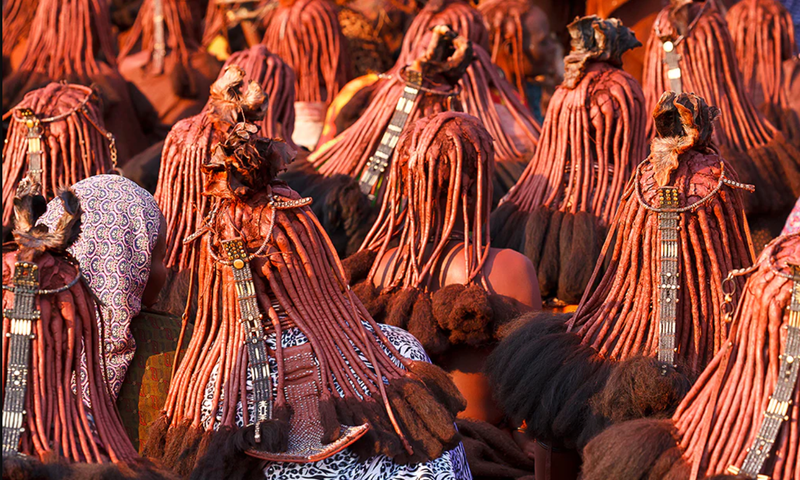Explore the rich traditions, spiritual beliefs, and untold stories of Africa’s lesser-known tribes—from the star-gazing Dogon of Mali to the nomadic San of Southern Africa.
Himba
Across Africa’s vast landscapes — from dense rainforests and arid deserts to secluded mountain ranges and remote islands — exist tribes whose stories remain largely untold. These hidden communities, often isolated by geography or historical neglect, are living repositories of ancient cultures and traditions.
While modernity sweeps across the continent, many of these tribes continue to preserve unique languages, spiritual beliefs, and rituals that date back centuries — if not millennia. Their ways of life offer rare insights into Africa’s diverse heritage, resisting the pull of homogenisation in a rapidly globalising world.
Beyond the cultural practices lies a treasure trove of oral histories and myths. These stories, passed down through generations, reflect not only how these communities understand the world but also how they view themselves within it. From creation tales to ancestral legends, these myths remain powerful threads in the fabric of their identity.
In this article, we journey into the heart of Africa’s lesser-known tribes, uncovering their vibrant cultures, unearthing forgotten histories, and exploring the myths that continue to shape their worldviews today.
While tribes such as the Zulu, Ashanti, and Maasai are widely recognised, lesser-known groups possess equally rich cultural legacies:
Hairstyles signify age, status, and milestones
Nomadic pastoralists with deep ancestral reverence
Key Myths
Worship Mukuru, a supreme ancestral spirit
Sacred fire (okuruwo) kept burning to connect with ancestors
Hadza (Tanzania)
One of the last remaining hunter-gatherer societies
Speak a unique click language
Live sustainably off the land without farming or livestock
Key Myths
Revere spirits known as jinn and ancestral saints
Stories passed through oral poetry and music
Dogon (Mali)
Famous for cliffside villages and masked dances
Maintain complex social structures and cosmology
Renowned for their early astronomical knowledge
Key Myths
Myths feature the Nommo twins, water spirits central to creation
Belief in Sirius B star long before its discovery by modern science
Astronomy and agriculture tied to spiritual cycles
San (Southern Africa)
Ancient rock art dating back thousands of years
Traditionally nomadic, skilled in tracking and survival
Storytelling and trance dances integral to spiritual life
Key Myths
Believe in a trickster god (Kaggen) who created the world
Myths explain animal behaviour and natural events
Untold Histories and Lost Legacies
Hidden tribes often preserve oral histories that challenge dominant historical narratives:
San Rock Art
Found in caves and rock shelters across Southern Africa
Depicts spiritual rituals, wildlife, and colonial encounters
Herero (Namibia)
Victims of early 20th-century genocide by German colonial forces
Oral traditions preserve memories of resistance and survival
Tuareg (Sahara Desert)
Nomadic traders who controlled trans-Saharan trade routes
Oral poetry recounts battles, migrations, and alliances
Key African Historical Moments
Historical events that shaped modern Africa had distinct impacts on tribal groups:
Berlin Conference (1884–1885)
Artificial borders divided ethnic groups and territories
Marginalised tribal governance and traditional leadership
Africa’s hidden tribes are the custodians of ancient wisdom, spiritual depth, and alternative histories. Their stories, myths, and cultural practices are essential not just for understanding Africa’s past—but also for envisioning a future that honours its diversity.

